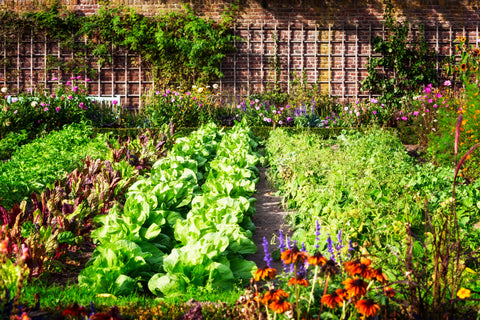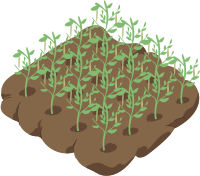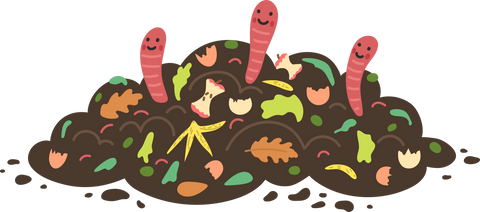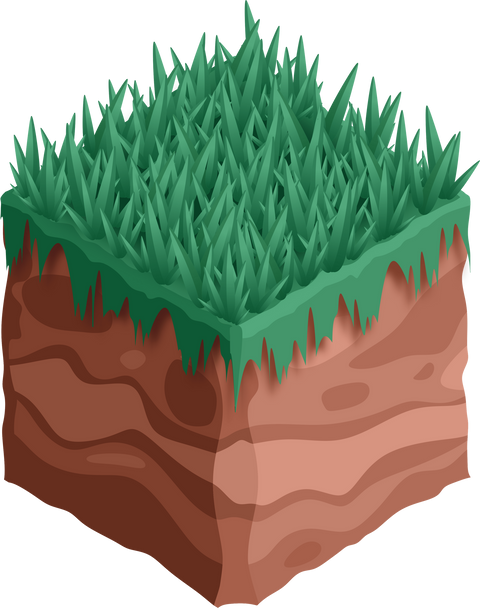Want thriving plants and happy soil? Dig into these top regenerative gardening tips—from compost and cover crops to mulch and microbes—and grow a garden that gives back!

Here are the top 5 ways to build soil health…

Compost is like gold for soil. It boosts fertility, supports microbial life, improves structure, and enhances moisture retention. You can also add worm castings, leaf mold, aged manure, and crop residues.
The goal? Feed the soil, not just the plants.
Healthy soil typically has 3-5% organic matter or higher, but even 1% soil organic matter can make a huge difference in its water holding capacity and structure.

Don’t let your garden sit idle! Planting cover crops like clover, vetch, rye, or buckwheat in the off-season helps protect soil from erosion, suppress weeds, add biomass, and support diverse soil life. When turned in or cut back, they also act as green manure.
Use winter cover crops to keep living roots in the soil during the dormant season - they’re like a warm blanket for your soil life.

Monocultures (fancy word for planting 1 crop over and over) can deplete soil and encourage pests. By mixing things up - intercropping, rotating crops, or planting polycultures - you support a wide variety of microbes, fungi, and insects that help balance your soil ecosystem.
Why it works: Each plant family exudes different sugars into the soil through its roots. That feeds different microbial populations, which improves nutrient cycling and resilience.

Living soils are teeming with bacteria, fungi, protozoa, nematodes, and many other critters that all work together to feed your plants and support your garden. Compost teas, microbial inoculants, or fermented plant extracts can help jumpstart biology in depleted soils. We call this “Biohacking your soil”.
Pro tip: look for supplements that contain beneficial microbes such as bacillus, mycorrhizae, trichoderma, and/or humic acids.

A 2-4” layer of organic mulch, like staw, leaves, bark, or wood chips, shields your soil from wind and sun, suppresses weeds, keeps soil temperatures stable, holds onto moisture to keep plants happy, and slowly decomposes to feed microbes. Compost and mulch are a gardener’s silent helpers - they really do most of the work.
Bonus: Fungal-dominant soils (like those under wood mulch) are especially good for perennials, trees, and shrubs.
Here are the top 5 ways to protect soil structure…

Tilling and excessive digging break up the soil’s structure and disrupt fungal hyphae and microbial habitats. If possible, reduce or eliminate tilling, especially deep or frequent tilling, and opt for a no-dig or broadfork method to loosen compacted layers. This is hard to avoid in a new bed or after a garden renovation, but try to minimize digging too much soil in future years to preserve its healthy structure.
Science fact: Fungal hyphae and glomalin (a sticky substance secreted by microbes) help hold soil particles (aka aggregates) together. Tillage destroys both!

Bare soil is vulnerable soil. Wind and rain can quickly wash away topsoil and nutrients. If you’re between crops, plant a cover crop or throw down mulch to keep soil protected and active, and keep it where it belongs - in your garden.
Consider this: Weeds aren’t always weeds - they can help hold the soil together while a new crop establishes. And, see the previous point about plant diversity too.
Synthetic fertilizers and pesticides may offer quick fixes, but they often harm beneficial microbes and disrupt natural nutrient cycling. Over time this leads to compaction, nutrient imbalances, and can lead to chemical-resistant pests (super bugs that the pesticide no longer works on).
Better approach: Use organic fertilizers, compost, biological controls (friendly bugs), and integrated pest management practices to nourish rather than sterilize.
Overwatering creates anaerobic conditions that suffocate roots and microbes, and encourage plant diseases. Under-watering stresses plants and halts microbial activity (they need it too). Aim for consistent, moderate moisture. And use a gentle breaker or watering wand to avoid blasting the soil with high pressure.
Soil hack: Add organic matter and mulch to help your soil retain moisture and reduce watering needs.

Walking or driving on garden soil - especially when it’s wet - compresses pore space and reduces oxygen availability for roots and microbes. Use designated paths, raised beds, and /or stepping stones to keep foot traffic off growing areas. Lawns could be an exception, but grass doesn’t like compacted soil either. Best to tread lightly!
Your soil is alive - treat it that way!
Soil isn’t just dirt - it’s a living, breathing ecosystem. By feeding it, protecting it, and minimizing harm, you’re building a stronger foundation for everything you grow.
Want to see results? Try just one or two of these practices this season. Over time, they build on each other, creating resilient soil that supports thriving plants, healthy harvests, and you!
